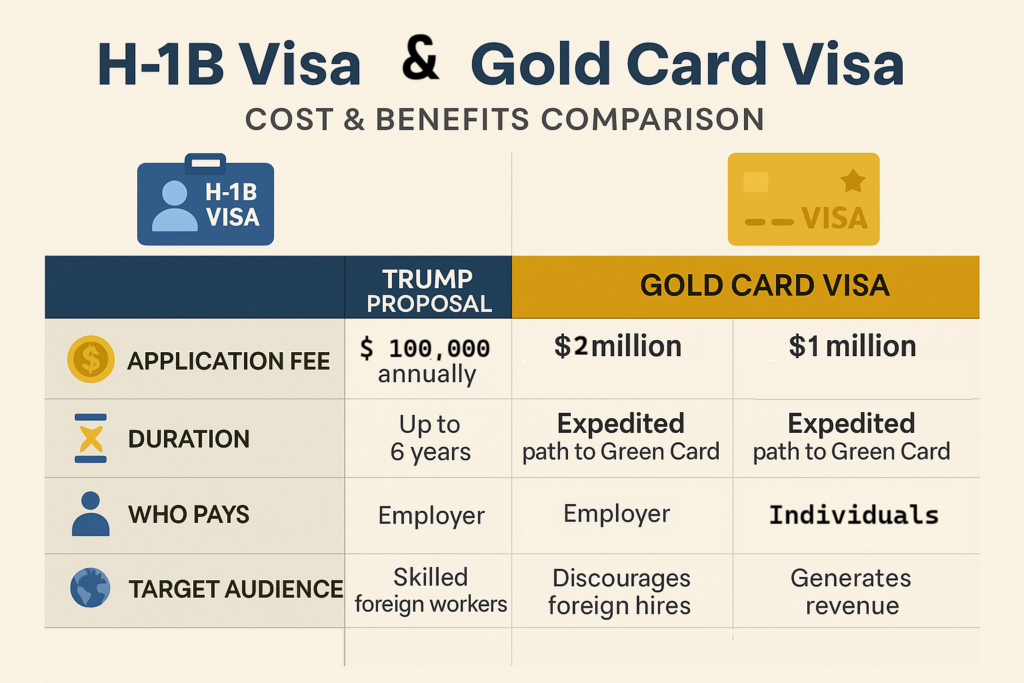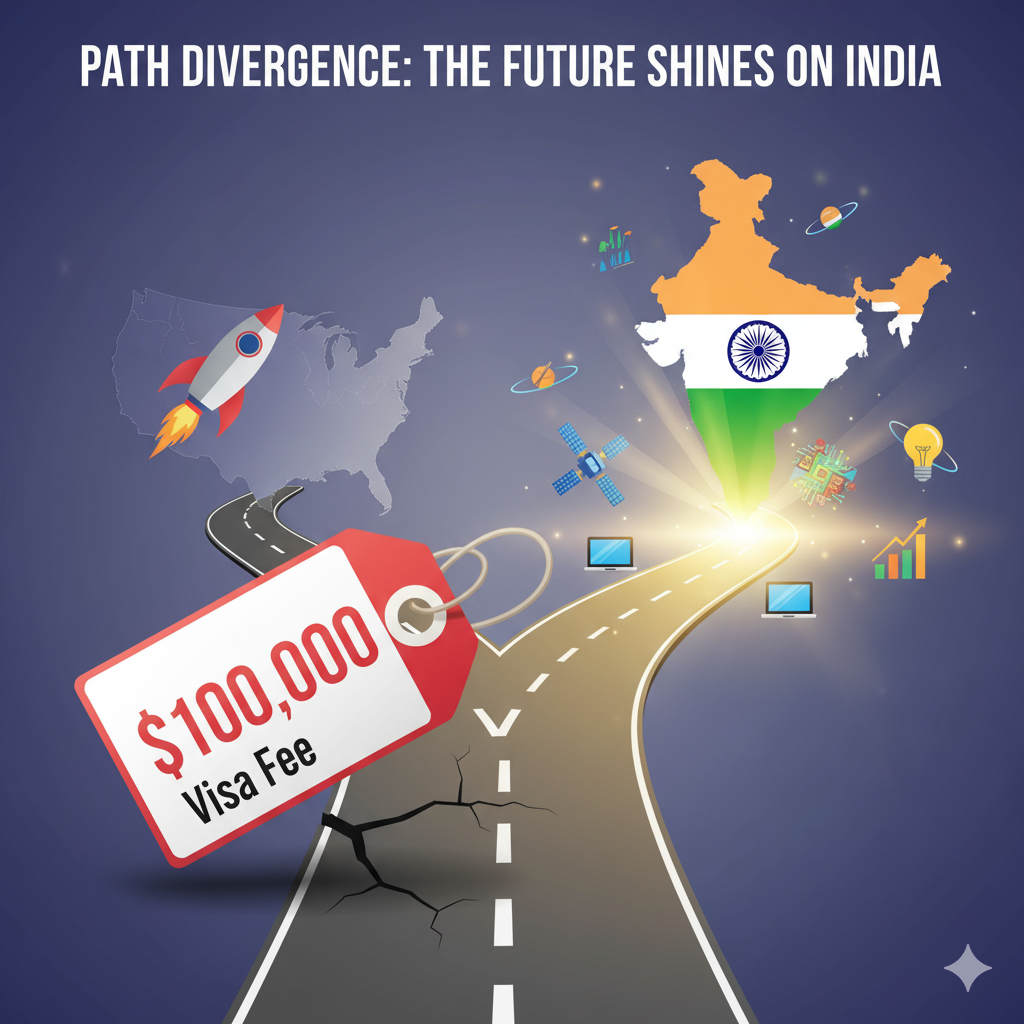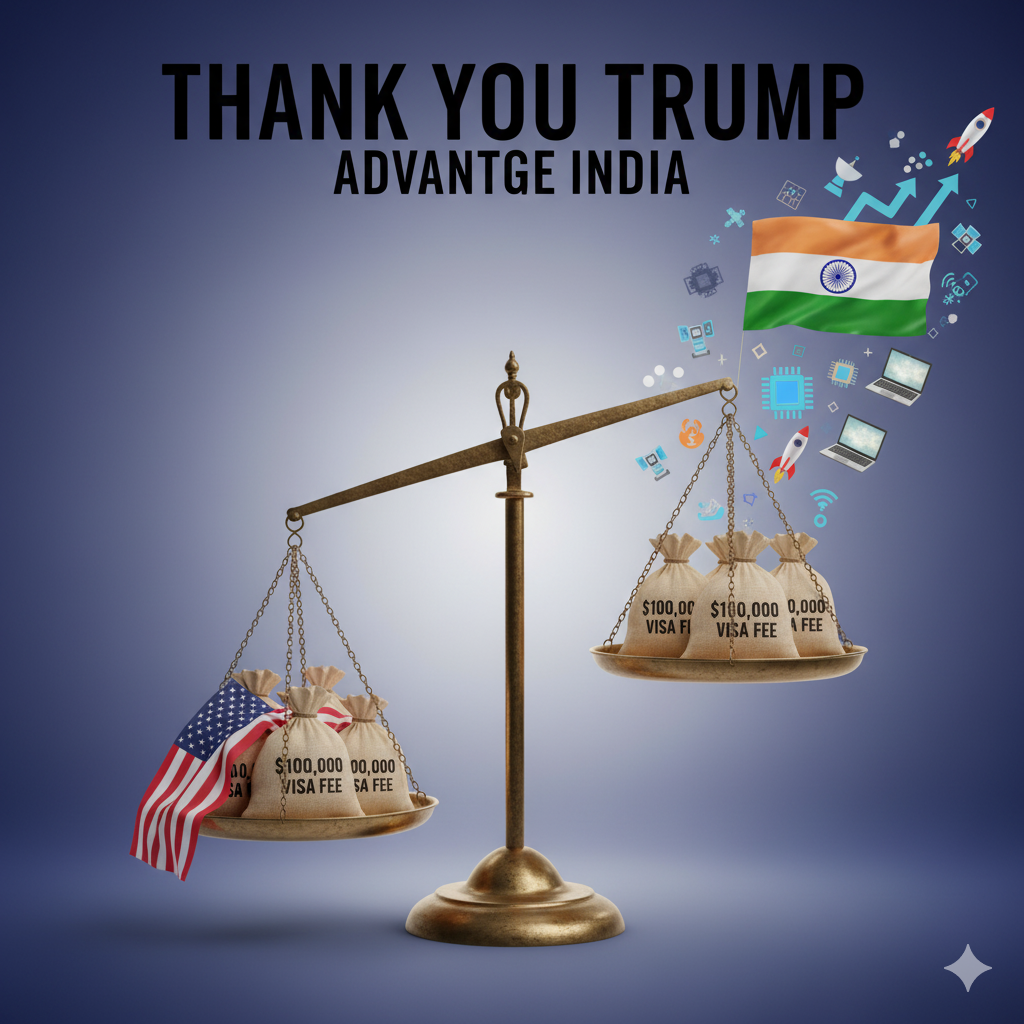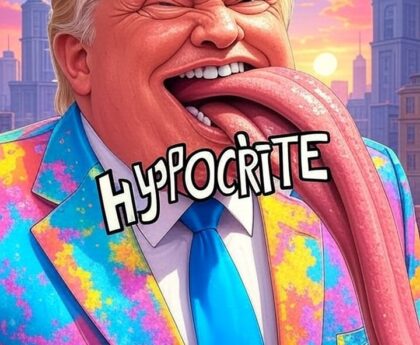U.S. President Donald Trump’s decision to impose a staggering $100,000 annual fee for each H-1B visa employee has sent shockwaves across the tech industry worldwide. Coupled with his new “Gold Card” visa that allows millionaires and billionaires to buy their way into the United States, the move is as radical as it is controversial.
For America, the message is clear: only the best and wealthiest are welcome. For India, this could well be a blessing in disguise—a turning point that ends decades of brain drain and channels talent back home.

Why This Move is Good for America in the Short Run
- Protecting American Jobs: The $100,000 fee creates a natural barrier, ensuring that companies will think twice before hiring foreigners at the expense of U.S. citizens.
- Revenue Generation: With each H-1B now costing companies hundreds of thousands of dollars over six years, the U.S. Treasury will see a windfall.
- Filtering for Talent: Only those employees considered indispensable by their employers will remain—raising the quality of foreign hires.
- Political Messaging: For Trump, this is a strong campaign narrative—“America First.” It appeals directly to domestic voters who have long believed foreigners were undercutting their jobs.
Why This Move is Bad for Indian Techies
- Financial Burden on Employers: Indian IT workers will find fewer companies willing to sponsor them. Junior and mid-level positions will disappear, leaving only a handful of roles for highly specialized talent.
- Uncertainty and Discrimination: Indians, who constitute nearly 70% of H-1B visas, will now face a cloud of uncertainty. They will be judged not just for their skills but also by whether they are “worth” a $100,000 fee.
- Safety and Social Pressures: Already, incidents of racial attacks and discrimination against Indians in the U.S. are rising. With fewer support networks, many will feel isolated and vulnerable.
- End of the Bubble: For years, Indian techies thrived in the American dream bubble. This policy is a reminder: as foreigners, they are subject to shifting rules, politics, and prejudices.

Why This Move is Great for India in the Long Run
- Stopping Brain Drain: India has been losing its brightest minds to the U.S. for decades. With fewer opportunities abroad, many will now stay and build in India.
- Boost to Indian Economy: These returnees and stay-backs will demand better infrastructure, merit-based systems, and global standards—forcing reforms in governance, business, and technology.
- Reducing Corruption: Talented professionals who choose to remain in India won’t tolerate the rot of corruption and inefficiency. Even if 1% of India’s tech workforce decides to fix the system, it could be transformative.
- Exposing the Corrupt: The “Gold Card” visa will serve as a spotlight. Sons, daughters, and relatives of politicians and bureaucrats—who lack talent but can buy their way into America—will expose themselves by paying millions. Tracking this wealth will reveal corruption at home.
- Entrepreneurial Wave: Instead of building products for Silicon Valley, many of India’s brightest will now build for Bengaluru, Guwahati, Hyderabad, Bhubaneswar, Pune and Gurgaon. Expect a surge of startups and innovations aimed at solving India’s problems.
Why This Move Will Severely Impact the U.S. in the Long Run
- Talent Exodus Reversed: For decades, Indian engineers and doctors kept America’s innovation engine running. By pricing them out, the U.S. is effectively exporting talent back to India and Asia.
- Cultural and Economic Loss: The Indian diaspora has been one of the most law-abiding, peace-loving, and economically vibrant immigrant communities in America. Their absence will mean fewer cultural exchanges, events, tours, and investments that benefited the U.S. economy.
- Accelerating De-Dollarization: By shutting out affordable talent, the U.S. risks losing its economic edge. Nations like India and China will invest in self-sufficiency and trade in non-dollar currencies—weakening America’s financial hegemony.
- Killing Its Own Advantage: The H-1B system, while imperfect, gave America access to the world’s smartest minds at scale. By restricting it, the U.S. has effectively surrendered its edge in research, IT, and innovation.
- Widening the Innovation Gap: While Trump seeks “valuable people only,” the reality is that innovation thrives on scale, diversity, and experimentation. By cutting off the pipeline, America risks falling behind.
The Indian Techie’s Gamble – Payback Time
For years, Indian professionals took the gamble of leaving home to build careers in America. That gamble worked well—but now it’s payback time in the form of Donald Trump.
- Those who are truly talented will still find opportunities globally.
- Those who aren’t indispensable will return to India—or never leave in the first place.
- Indian companies, with their ingenuity and adaptability, will find new ways to thrive without leaning on the U.S. market.
Thank You Trump – A Rare Opportunity for India
In a way, Trump has done what no Indian leader dared to do: force Indian talent to stay home. This may be painful in the short run, but in the long run, it is an undeniable advantage for India.
- For the U.S., it is a self-inflicted wound—short-term gain, long-term loss.
- For India, it is a generational opportunity—a chance to retain brilliance, fix corruption, and build a stronger, self-reliant economy.
So yes, Mr. Trump, on behalf of India—Thank You. Advantage India.





